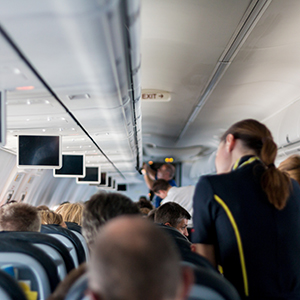COPD patients’ pre-flight check: A narrative review

Published: March 14, 2022
Abstract Views: 1783
PDF: 752
Publisher's note
All claims expressed in this article are solely those of the authors and do not necessarily represent those of their affiliated organizations, or those of the publisher, the editors and the reviewers. Any product that may be evaluated in this article or claim that may be made by its manufacturer is not guaranteed or endorsed by the publisher.
All claims expressed in this article are solely those of the authors and do not necessarily represent those of their affiliated organizations, or those of the publisher, the editors and the reviewers. Any product that may be evaluated in this article or claim that may be made by its manufacturer is not guaranteed or endorsed by the publisher.
Similar Articles
- E.M. Clini, P. Siddu, L. Trianni, R. Graziosi, E. Crisafulli, M.T. Nobile, Activity and analysis of costs in a dedicated weaning centre , Monaldi Archives for Chest Disease: Vol. 69 No. 2 (2008): Pulmonary series
- K. Psathakis, V. Skouras, F. Chatzivassiloglou, K. Tsintiris, Osteophytes may be a rare cause of recurrent pleural effusions , Monaldi Archives for Chest Disease: Vol. 79 No. 2 (2013): Pulmonary series
- P.M. RodrÃguez Suárez, J.L. Freixinet Gilart, Pleurodesis in the treatment of pneumothorax and pleural effusion , Monaldi Archives for Chest Disease: Vol. 79 No. 2 (2013): Pulmonary series
- Orazio Valerio Giannico, Immacolata Ambrosino, Francesco Patano, Cinzia Germinario, Michele Quarto, Anna Maria Moretti, Educational level, marital status and sex as social gender discharge determinants in chronic obstructive pulmonary disease exacerbations: a time-to-event analysis , Monaldi Archives for Chest Disease: Vol. 89 No. 2 (2019)
- Omid Rismantab, Seyed Aili Javad Moosavi, Mohammad Reza Farahnak, Maryam Dastoorpoor, Hanieh Raji, Role of CRP as a marker for discrimination of exudative and transudative pleural effusion , Monaldi Archives for Chest Disease: Vol. 92 No. 4 (2022)
- O. Marrone, A. Salvaggio, M. Gioia, A. Bonanno, M. Profita, L. Riccobono, A. Zito, G. Insalaco, M.R. Bonsignore, Reticulocytes in untreated Obstructive Sleep Apnoea , Monaldi Archives for Chest Disease: Vol. 69 No. 3 (2008): Pulmonary series
- J.K. Stoller, On the Evidence that Augmentation Therapy Helps Asthma: Are Storks Really Responsible for New Babies? , Monaldi Archives for Chest Disease: Vol. 69 No. 4 (2008): Pulmonary series
- Deependra Kumar Rai, Surya Kant, Vatsal Bhushan Gupta, Paradoxical reaction in peripheral lymph node tuberculosis: a review for its prevalence, clinical characteristics, and possible treatment , Monaldi Archives for Chest Disease: Early Access
- Sumita Agrawal, Akhil Dhanesh Goel, Nitesh Gupta, Ayush Lohiya, Role of low dose computed tomography on lung cancer detection and mortality - an updated systematic review and meta-analysis , Monaldi Archives for Chest Disease: Vol. 93 No. 1 (2023)
- Elisabetta Zampogna, Nicolino Ambrosino, Federico Mattia Oliva, Giovanni Sotgiu, Laura Saderi, Gioele Cremonese, Giorgio Bellelli, Antonio Spanevello, Fabio Angeli, Dina Visca, Heart rate recovery in adult individuals with asthma , Monaldi Archives for Chest Disease: Vol. 93 No. 1 (2023)
<< < 9 10 11 12 13 14 15 16 17 18 > >>
You may also start an advanced similarity search for this article.

 https://doi.org/10.4081/monaldi.2022.2252
https://doi.org/10.4081/monaldi.2022.2252





